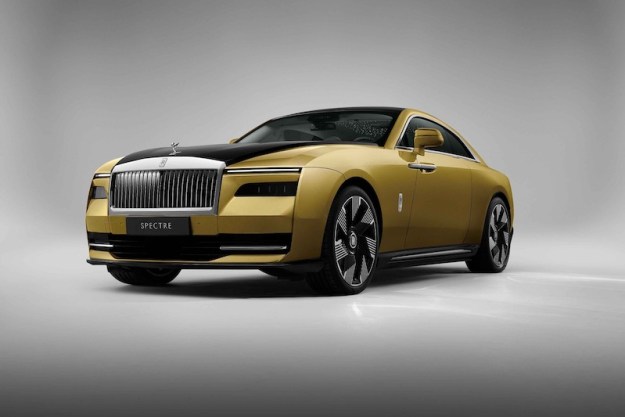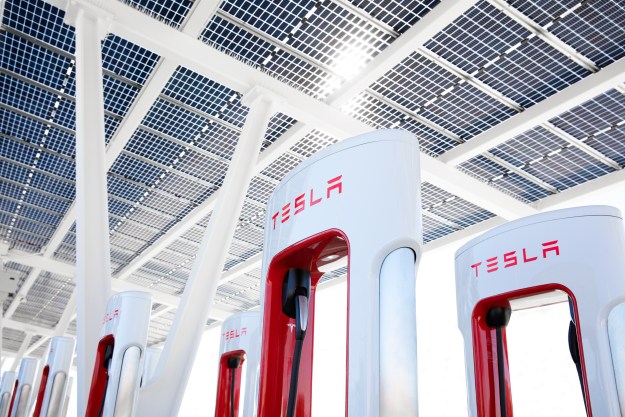If there is such a thing as an “ordinary” Rolls-Royce, this is it. The long-wheelbase 1970 Silver Shadow is one of the most prolific Rolls models ever, which is why it’s largely ignored by collectors — and this one in particular is a little rough around the edges. However, this Rolls wears its scars with pride, because they were put there by a famous owner: Johnny Cash. They also hide a remarkable secret: A completely electric powertrain from a Tesla Model S.
This blend of old and new was built by Shift Electric Vehicles of Albany, Oregon, for an anonymous owner, who is a fan of both Johnny Cash and electric cars. After purchasing the car at auction, the owner decided to swap in a complete Tesla powertrain, Shift EV boss Kirk Swaney told Digital Trends.
“They originally approached Tesla,” but the automaker isn’t in the business of restoring cars from other manufacturers, and the Rolls needed plenty of TLC. Shift EV didn’t cut up a pristine car with a celebrity history; this Rolls would have required plenty of work even without the electric conversion.

“The price tag to repair the car and keep it running with its normal drivetrain would have been pretty significant,” Swaney said. Among other things, the Silver Shadow has a complex hydraulic suspension system that provides a smooth ride when working properly, but it can be a nightmare to fix.
Not that replacing the old components with Tesla hardware was easy. Most electric conversions involve finding parts that work with a given vehicle, not swapping a complete powertrain from one car into another, Swaney explained. In a Tesla, the battery pack sits in a cavity running the length of the floor. No such space exists under the floor of the Rolls, so Swaney and his team borrowed an empty Tesla battery pack just to see if it would fit.
“It fit almost exactly the same,” Swaney said. “On length and width, it was perfect.” The pack does hang down a bit, but the Rolls had ground clearance to spare. Swaney and his team also specifically sought out a rear-wheel drive 2016.5 Tesla Model S 75 for the donor car. Other Model S variants have more range, but the 75-kilowatt-hour battery pack has extra space at the top, which could be trimmed down to fit.

The rear-wheel drive donor car also supplied a more powerful single motor, which is mounted in the back of the car, just as it would be in a Tesla. A dual-motor all-wheel drive system and Autopilot driver-assist were beyond the scope of this project, Swaney said, but that still left plenty of components to swap over. Like most modern cars, Teslas rely on an array of computers and sensors to work, all of which had to be reconfigured for the Rolls.
“It was a pretty significant job to move these computers, mount them, and make them work in a functional way,” Swaney said. It also required keeping the Tesla’s wheel hubs, which contain sensors that send data to the computers, and reprogramming the electric power steering system, which initially was confused by the Rolls’ different dimensions. The team also kept the Rolls’ steering wheel and shifter, finding workarounds for controls designed to work with the Tesla wheel and shifter.

The result is a car that looks like a vintage Rolls, but drives even better, according to Swaney.
“This car is quick, and its smoother than the stock Rolls-Royce was,” he said. These cars are known for smooth and silent acceleration, which is why Rolls gives them names like Silver Shadow, Phantom, and Ghost. That’s exactly what you get when you’re going electric.
Editors' Recommendations
- Tech giant reveals nice price for new EV to take on Tesla
- Porsche’s most powerful production car is an EV
- How to watch Tesla’s Cybertruck delivery event today
- How do you crash-test an EV with an 871-pound battery? Mercedes showed us
- Ford EV drivers can use 12,000 Tesla Superchargers starting in 2024


